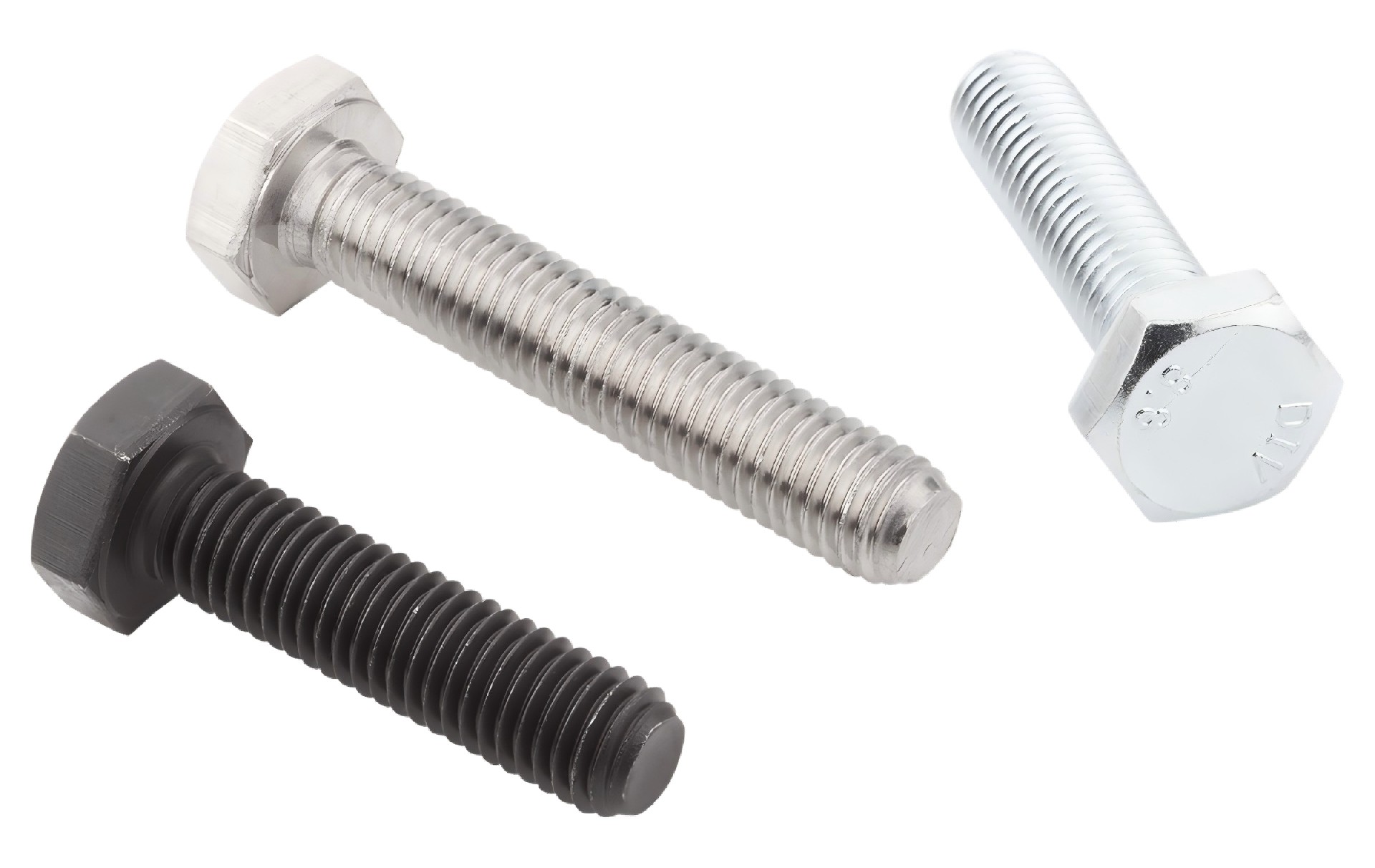What Does DIN Mean for Bolts?
DIN stands for Deutsches Institut für Normung, the German Institute for Standardization. In the context of bolts and fasteners, DIN standards ensure consistent quality, dimension, thread profiles, material grades, and mechanical performance. When a bolt is labeled as "DIN," it means it conforms to a specific German engineering standard.
What Does DIN Stand For in Engineering?
In engineering, DIN is a symbol of precision, safety, and international compatibility. DIN standards are widely used globally and often serve as a reference point when comparing with ISO, ANSI, or EN standards.
What Is a DIN 933 Bolt?
A DIN 933 bolt is a fully threaded hex head bolt with a metric thread. It is one of the most widely used fasteners in industrial and structural applications.
Key Features:
Fully threaded from head to tip
Hexagonal head for easy tightening with wrenches
Available in carbon steel and stainless steel
Comes in strength grades such as 4.6, 8.8, 10.9, and 12.9
Suitable for high clamping force and repeated adjustment

What Is a DIN 931 Bolt?
DIN 931 defines partially threaded hex bolts with a metric thread. Unlike DIN 933, DIN 931 bolts have an unthreaded portion (shank) between the head and thread, which provides better shear strength in structural applications.
Key Differences Between DIN 933 and DIN 931:
Common Applications of DIN Bolts
DIN 933 Is Commonly Used In:
Mechanical assembly – machines, housings, bearings
Automotive – underbody frames, engine mounts
Electrical enclosures – adjustable panels and brackets
Renewable energy – wind and solar structure fastening
DIN 931 Is Commonly Used In:
Steel construction – beams, trusses, bridges
Heavy equipment – tractors, excavators, cranes
Structural frames – load-bearing connections
FAQ: People Also Ask
🔹 What is the difference between DIN 933 and DIN 931?
DIN 933 is fully threaded — ideal for adjustable assemblies.
DIN 931 is partially threaded — ideal for fixed structural loads.
🔹 What does DIN mean for bolts?
DIN indicates that the bolt meets precise German engineering standards for dimensions, strength, and compatibility.
🔹 What does DIN 933 mean?
It refers to fully threaded hex head bolts with metric threads and is commonly used across industries for mechanical and modular fastening.
🔹 What is a DIN 931 bolt?
It’s a partially threaded hex bolt, designed for shear load resistance in construction and equipment frameworks.
Choosing the Right DIN Bolt: Quick Guide

Conclusion
Understanding what DIN means in bolts is essential for selecting the right fastener for your application. Whether you’re dealing with modular machinery (DIN 933) or structural frameworks (DIN 931), these German-standard bolts offer consistent quality, compatibility, and performance.
Always consider:
Thread length (full vs. partial)
Material grade (carbon vs. stainless steel)
Environmental exposure (indoor vs. marine use)
Using DIN-certified bolts is a smart investment in safety, durability, and engineering precision.









